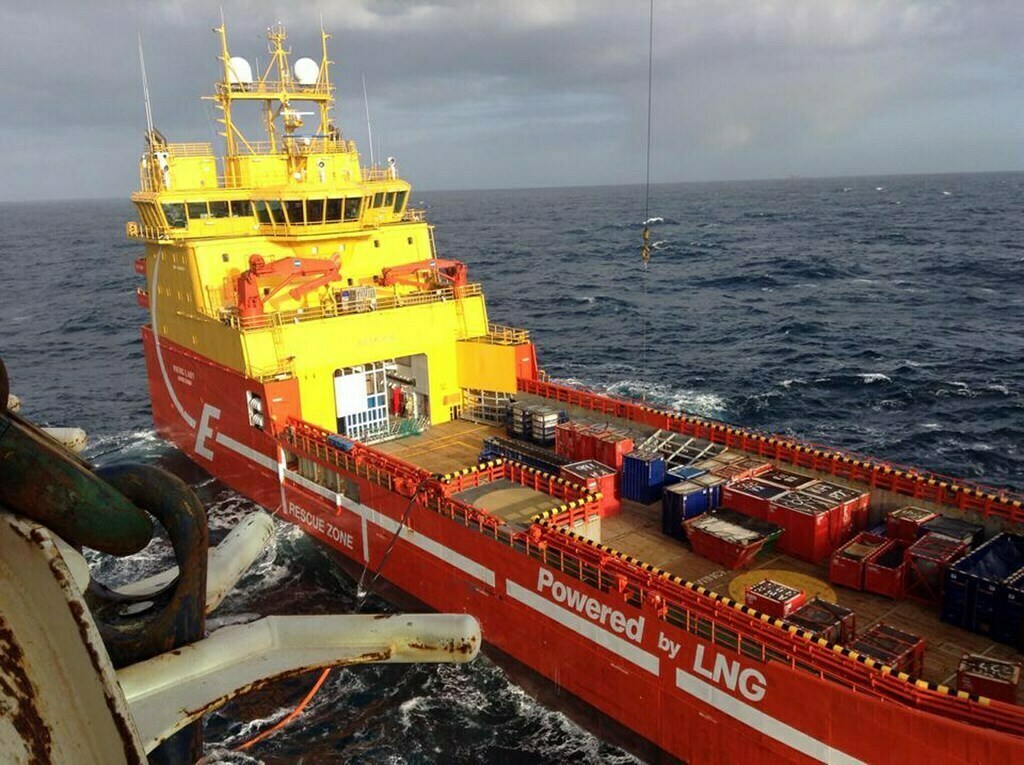 Cruise lines are exploring alternative fuels, which, in addition to LNG, include battery power and fuel cells.
Cruise lines are exploring alternative fuels, which, in addition to LNG, include battery power and fuel cells.
Battery technology has been advancing rapidly in the last few years, according to Andrea Cogliolo, director of marine, RINA Services.
“We are seeing the quantity of energy compared to the weight of the battery increasing to a much better ratio,” he said. As an example, he noted that a lithium battery producing 1 MW for one hour would weigh about 11 tons, which he said was a good ratio between the energy available and the weight and space required for installation. In addition would be the control system and housing that would almost have the same weight as a 1 MW battery.
Having improved storage capacity, he said such batteries could be practical for marine applications, pending the operating profile of a vessel.
“A ship’s engines can charge the battery when there is less engine load for propulsion or hotel services,” he said. At higher speeds and load requirements, the battery power can be used for peak sharing, that is, adding to the engines without running them on maximum load. This also means there can be less installed engine power onboard than otherwise would be required.
“Battery power can also be used in environmentally sensitive areas with zero emissions from the ship,” he continued. “But since cruise ships and ferries have such high energy requirements, zero emissions use would be limited to relatively short time periods. Battery technology has not advanced far enough to power a cruise ship for a whole cruise or even segments of a cruise,” he added.
The IGF Code also allows hydrogen for fuel cells aboard ships, Cogliolo said. “Along with batteries, the fuel cell technology has also made dynamic progress over the past few years, especially in terms of the dimensions of the fuel cells, which have been reduced, and a 400 kW fuel cell is now comparable in size to a 400 kW diesel generator.”
But before fuel cells are adopted more widely in a marine environment, Cogliolo believes more work needs to be done in terms of assessing the impact of the environment on these devices, such as vibration, which could increase the likelihood of leaks in the joints of hydrogen fuel lines.
“There are many factors to consider and many components that need to be developed further before fuel cells become truly viable,” he said. “So far, fuel cell applications have been limited to research and experimental use mostly in small vessels and short-sea operations, partially because of their high costs.”
The argument for using batteries and fuel cells is to reduce or eliminate CO2 emissions. “Fuel cells using hydrogen as a fuel do not release any CO2,” Cogliolo said, “but you have to look at the whole picture and make sure that the hydrogen is produced using renewable resources, such as solar, wind or nuclear power, that do not produce any carbon.
“When the industry speaks about alternative fuels, they tend to focus only on the final user. With LNG, we have a 20 percent reduction of CO2. But we have to look at the whole cycle, that is, how natural gas is produced – compressed or liquefied and how it is transferred with potential leakage, meaning release of methane from LNG, which is a greenhouse gas with much larger impact than CO2, into the atmosphere.
“We need to have a complete balance from the source to the user, otherwise it is too easy to say that burning LNG reduces CO2 emissions by 20 percent. While it is true, it is only true for the user. We have to look at the whole chain.
“The same goes for hydrogen. If we burn oil to produce hydrogen we do not solve the problem. The solution is not only to use hydrogen, but to produce it from renewable energy sources,” he added.
Batteries face the same challenge: how they are produced, and later, how they are recycled.
Excerpt from Cruise Industry News Quarterly Magazine: Winter 2016/2017




